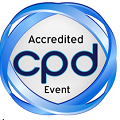
Claudia Gallert
University of Applied Science Emden Leer, Germany
Title: Elimination of micro-pollutants and pathogenic (antibiotic resistant) bacteria by advanced waste water treatment technologies
Biography
Biography: Claudia Gallert
Abstract
Elimination of bacteria by ozonation in combination with adsorption onto activated carbon or slow sand fi ltration is a possibility for advanced sewage treatment in order to improve the quality of treated sewage and to reduce the potential risk for human health and of receiving surface waters. To determine the elimination of sewage bacteria, infl owing and leaving waste water of diff erent treatment processes was analyzed in a culture-based and qPCR approach for its content of Escherichia coli, Enterococci and staphylococci and their resistance against selected antibiotics over a period of 17 months. For Enterococci, single species and their antibiotic resistances were identifi ed. In comparison to the standard waste water treatment process, ozonation plus adsorption onto activated carbon and/or sand fi ltration reduced the concentrations of total and antibiotic resistant E. coli, Enterococci and staphylococci. However, antibiotic resistant E. coli and staphylococci apparently survived ozone treatment better than antibiotic sensitive strains. Neither vancomycin resistant Enterococci nor methicillin resistant Staphylococcus aureus (MRSA) were detected by a culture-based approach. Th e decreased percentage of antibiotic resistant Enterococci aft er ozonation may be explained by a diff erent ozone sensitivity of species: Enterococcus faecium and Enterococcus faecalis, which determined the resistance-level, seemed to be more sensitive for ozone than other Enterococcus species. Overall, ozonation followed by adsorption onto activated carbon or sand fi ltration led to 0.8-1.1 log-units less total and antibiotic resistant E. coli, Enterococci and staphylococci. Th us, advanced waste water treatment aft er common sewage treatment is an eff ective tool for further elimination of microorganisms from sewage before discharge in surface water.

